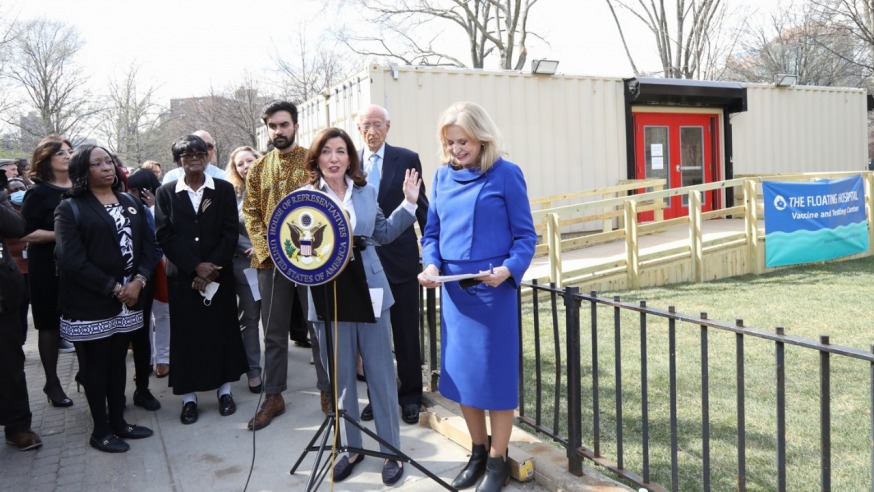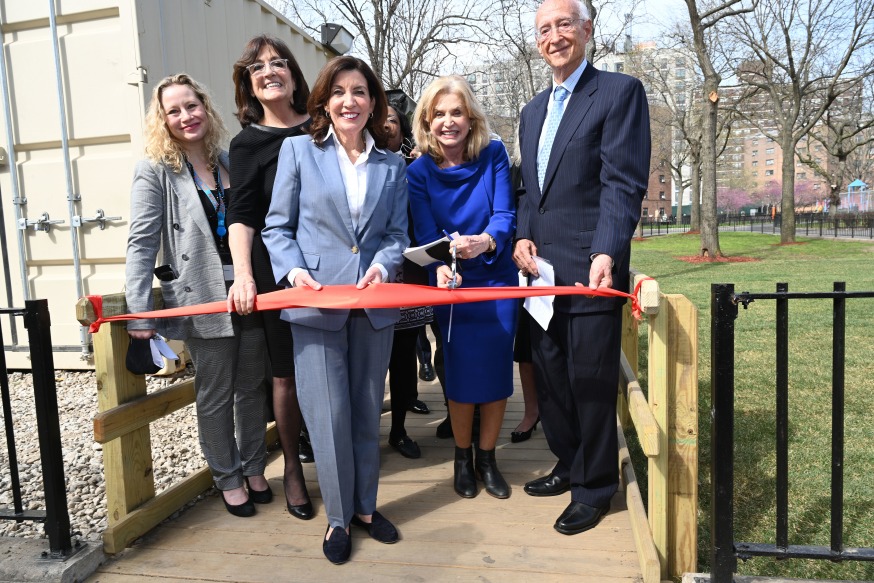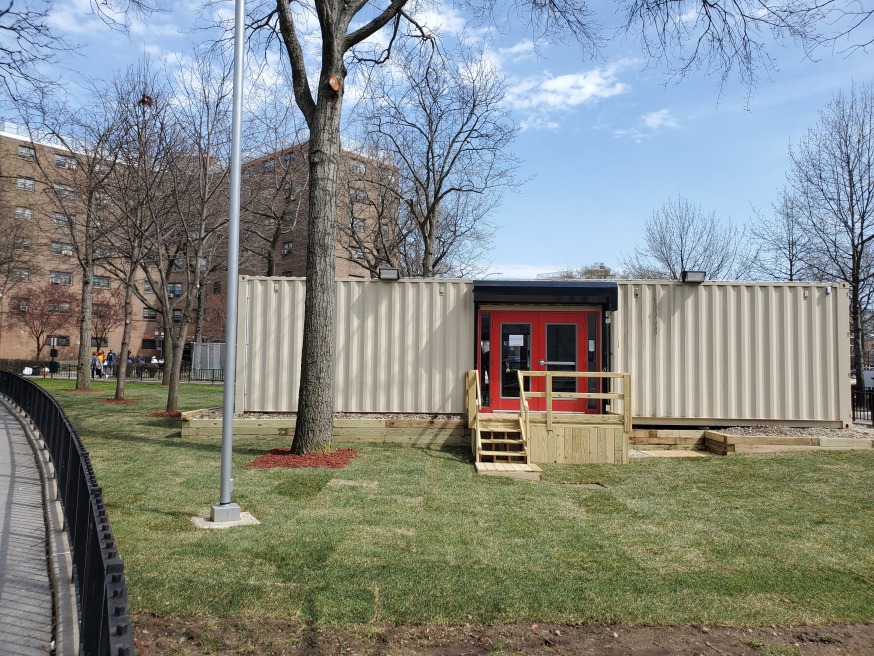
Elected officials and local leaders unveiling a new temporary medical care unit at the Astoria Houses NYCHA complex Thursday (Photo NYCHA)
April 18, 2022 By Michael Dorgan
Elected officials and local leaders unveiled a new temporary medical care unit at the Astoria Houses NYCHA complex Thursday that provides free COVID-19 healthcare services.
Gov. Kathy Hochul, Congresswoman Carolyn Maloney, Assemblymember Zohran Kwame Mamdani and NYCHA tenant leaders came together to cut the ribbon on the medical unit, where healthcare workers are administering free COVID-19 vaccines and tests.
The new medical care unit is being staffed and managed by the Floating Hospital, a Manhattan-based non-profit that provides healthcare to underserved communities.
The temporary facility is open from 9 a.m. to 5 p.m. on Tuesdays and Thursdays. It will stay open through March 2023, officials said.
Maloney said the unit will help address a shortage of vaccination sites in the neighborhood. There is only one permanent vaccination site within half a mile of the Astoria Houses NYCHA complex, she said.
“Healthcare is and always should be a human right… no one should be denied healthcare based on where they live,” Maloney said. “The lack of access to vaccines at Astoria Houses has led, in part, to a COVID-19 case rate within this zip code [11102] that is more than double the Queens and New York City case rates,” she added.

Elected officials cut the ribbon on a new temporary medical care unit at the Astoria Houses NYCHA complex (Photo via Kevin P. Coughlin / Office of Governor Kathy Hochul)
The COVID-19 case rate within the 11102 zip code, Maloney said, is about 30 percent– significantly higher than across the borough and city. The rate is approximately 13.4 percent across Queens, and 12.6 percent throughout the city.
Similarly, the COVID-19 death rate within the zip code, Maloney said, is about 616 deaths per 100,000 individuals, compared to 448 per 100,000 in Queens and 408 per 100,000 in New York City.
The unit was designed by a research and development team from the New Jersey Institute of Technology (NJIT) and The Tuchman Foundation, a Colorado-based charity. Maloney said she worked with the organizations to secure the unit for the neighborhood.
Hochul said that the new unit will play a part in ensuring New York’s recovery from the pandemic is inclusive, equitable and fair.
“That’s why it’s so important to have sites… bringing much-needed resources and services to communities that had been left behind for far too long,” Hochul said.
Representatives for NJIT, The Tuchman Foundation and the Floating Hospital also attended the ribbon-cutting event, along with Deputy Mayor Lorraine Grillo.

The new temporary medical care unit at the Astoria Houses NYCHA complex (Photo: NYCHA)
